If These Walls Could Talk
April 18, 2022
IN BRIEF | 15 min read
- The Bukit Timah Campus is a throwback to NUS’ early beginnings and a rarity in Singapore’s modern built environment. For close to a century, generations of students have passed through the campus, their memories adding to its long history — a story that continues to be written.

A history major, Ms Elizabeth Tan (Arts and Social Sciences ’09) has a healthy respect for the past. So, when she pursued a Master in Public Administration at NUS Lee Kuan Yew School of Public Policy (LKYSPP) in 2019, the sense of history at Bukit Timah Campus (BTC) — where LKYSPP is located — was apparent to her from the first day of class.
“The buildings at BTC are unique, with British colonial-era architectural features such as the arched corridors, pillars and red pitched roofs,” says Ms Tan, 37. She was also struck by the quotes from famous figures that adorn the walls of the buildings, particularly one from former Prime Minister Lee Kuan Yew (’41), who had briefly studied at BTC (then called Raffles College) between 1940 and 1941. “Knowing that Lee Kuan Yew had studied there before, and that the School is named after him, provided a sense of continuity and awe. As a student, I felt inspired and empowered by the setting.”
That said, one need not be a history buff to appreciate the special place that BTC holds in the larger Singapore story — and in the hearts of those who consider themselves privileged to have studied there. Through conversations with BTC alumni of yesteryear as well as more recent times, and with faculty leaders who helped usher in NUS’ ‘second act’ with BTC in the mid-2000s, The AlumNUS strings together a narrative of a campus steeped in tradition, while still fit for 21st-century learners.
It was easy to run into and make friends with peers from different faculties. I’m still close to them, after nearly 50 years.
Mr David Ho, a senior alumnus from Bukit Timah Campus
The Good Old Days
In many ways, students attending BTC today have inherited a space that is not too different from the one created for the inaugural batch of 43 Raffles College students in 1928. Much of the campus’ original layout and architecture remains intact — the two quadrangles (grassy courtyards) flanked by stately, low-rise buildings with covered walkways and wide arches; the majestic Angsana tree at the Lower Quadrangle, planted shortly after the campus was built; the pylon-like tower and the two small domes distinguishing the roof of the Manasseh Meyer Building; and the circular driveway leading to the main entrance in front of Oei Tiong Ham Building. Even the names of these buildings have been kept, in a nod to BTC’s earliest benefactors.
It all started back in 1918, when the British colonial administration proposed the establishment of a college to mark the centenary of Singapore’s founding by Sir Stamford Raffles. The idea was supported by local communities, and notably by individuals such as Oei Tiong Ham, Manasseh Meyer and Eu Tong Sen — prominent businessmen and philanthropists of the day — who made large donations. A decade later, on land formerly part of the Singapore Botanic Gardens, Raffles College commenced operations as the first institution for tertiary education in the arts and sciences in British Malaya.
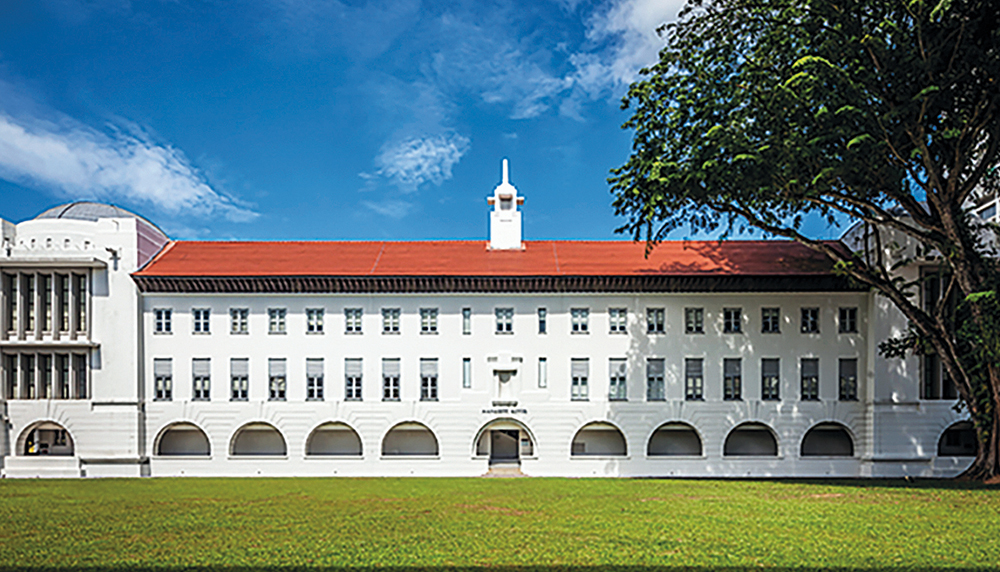
As the years passed and student numbers increased, the campus was steadily expanded to cater to their growing needs. More buildings were constructed between the 1940s and 1960s, including a new wing simply named Block A, a Library Building, a geometric-style Block B and a 10-storey Science Tower. It was also around this time that Raffles College was upgraded to university status and underwent a couple of name changes, to the University of Malaya in 1949 and then the University of Singapore in 1962.
This latter period in BTC’s history was the one that Professor Kishore Mahbubani (Arts and Social Sciences ’71), currently a Distinguished Fellow at NUS’ Asia Research Institute, entered as a young philosophy student. As the 73-year-old wistfully describes, there was a “magical aura” about the place. “It was a wonderful campus, very green and welcoming. I remember sitting for hours and hours in the library, devouring philosophy books…. Back then, the Philosophy Department was very small; I think there were fewer than 20 students and only six or seven professors. The professors were all open and accessible, and we socialised a lot with them, which is quite unusual now.”
For economics major Mr David Ho (Arts and Social Sciences ’72), his experiences outside the classroom were just as memorable as those inside, if not more so. “Our cohort was heavily involved in student activism — and our Class of ’72 is proud to have seven elected Members of Parliament,” says Mr Ho, also 73. The small, intimate campus bred familiarity as well. “It was easy to run into and make friends with peers from different faculties. I’m still close to them, after nearly 50 years.”
CAMPUS MILESTONES: ACT 1

1928
Raffles College is established at 469 Bukit Timah Road to provide tertiary education in the arts and sciences.
1941–1945
All academic activities are suspended during World War II as the College is turned into a medical facility, before being seized by the occupying Japanese military.
1949
Raffles College merges with the King Edward VII College of Medicine to form the University of Malaya, the first university in British Malaya.
1962
The Bukit Timah and Kuala Lumpur branches of the University of Malaya split up, and the former is renamed the University of Singapore.
1980
The University of Singapore merges with Nanyang University to become the National University of Singapore (NUS).
1981
NUS moves out of Bukit Timah to its current main campus at Kent Ridge.
However, it was only a matter of time before the University outgrew its campus and had to relocate to a bigger site. That moment came in 1981, not long after yet another name change to the present National University of Singapore. After NUS moved to its current main campus at Kent Ridge, the Bukit Timah site was subsequently occupied by other tertiary institutions, including the National Institute of Education (NIE), from 1982 to 2000; and Singapore Management University (SMU), from 2001 to 2005.
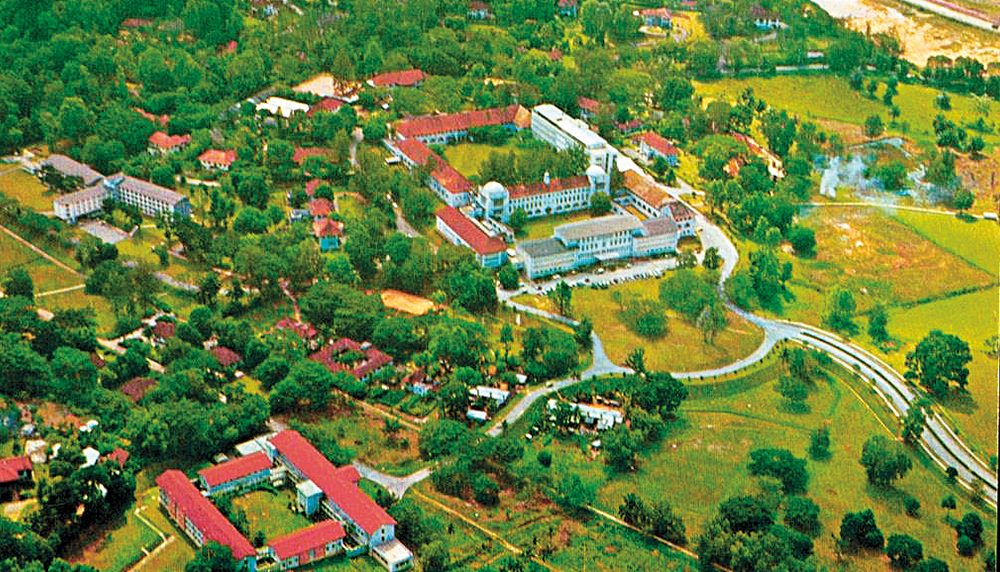
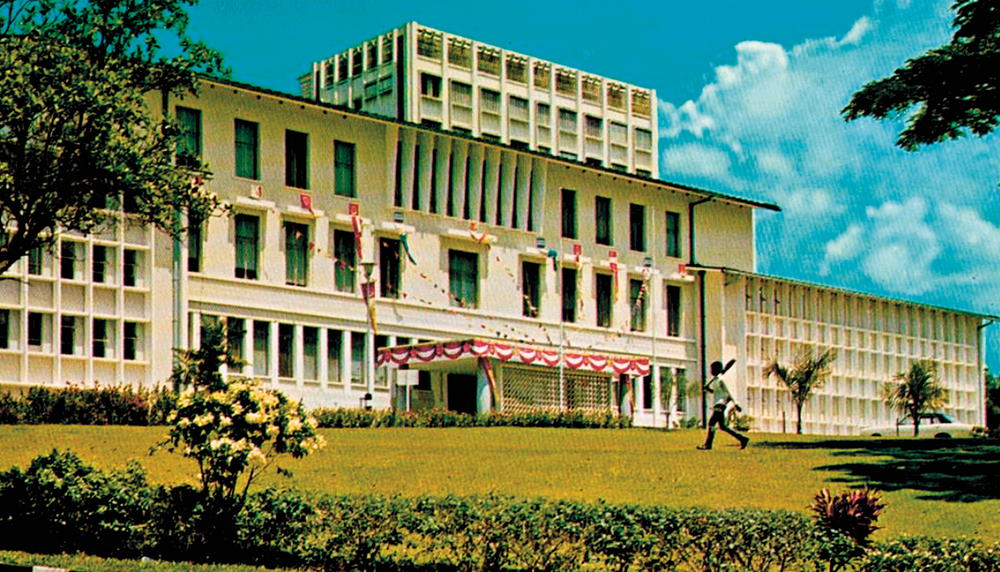
Claiming Our Roots
The shift to Kent Ridge heralded an ambitious new era for NUS, as it strove to excel further in both education and research, and become one of Asia’s top universities. By the early 2000s, NUS had arrived on the world stage and was well-regarded as a research-intensive university. Yet despite all this success, there was a nagging sense among many that something was missing: that without BTC — without a tangible heritage to hold on to — the University was incomplete.
Professor Shih Choon Fong, who served as NUS President from 2000 to 2008, picked up on this sentiment early in his tenure. “In my meetings with senior alumni who had graduated from BTC, they described feeling unmoored and expressed dismay and frustration because they didn’t have a place to call ‘home’,” he recalls. Although not an NUS alumnus, Prof Shih — who had studied at Harvard University and whose heart still “beats faster” whenever he goes back there — understood how they felt. “BTC is an integral part of NUS, and of the lives of those who studied there. It is where generations of alumni spent their most formative years, not just learning but making lifelong friendships and, sometimes, finding lifetime partners. I would say BTC is the ‘cradle’ of NUS. In fact, you could say BTC is the ‘cradle’ of all universities in Singapore,” Prof Shih explains. As NUS President, he was also acutely aware of the importance of honouring and preserving the University’s past; otherwise, NUS would lack rootedness and “roll like tumbleweed”, and its alumni would feel less connected to their alma mater.

With NUS’ centennial celebrations approaching in 2005 and SMU slated to move to Bras Basah in July that year, the timing seemed right to fight for the soon-to-be-vacated Bukit Timah premises. Prof Shih commented on this at NUS’ Commencement Dinner in July 2004, where he used the metaphors of the “Lexus” for global success in our innovation-driven world and the “olive tree” for rootedness (as symbolised by BTC) — references taken from the bestselling 1999 book by Thomas L. Friedman. “NUS has devoted much attention to building our Lexus,” Prof Shih told the audience — and rightly so — but the danger was that “we may lose sight of the need to grow our olive tree.” He went on, “We do not have to choose between the Lexus and the olive tree. We can have both. Let us grow our olive tree as we work towards building our Lexus.”
BTC is an integral part of NUS, and of the lives of those who studied there. I would say BTC is the ‘cradle’ of NUS. In fact, you could say BTC is the ‘cradle’ of all universities in Singapore.
Professor Shih Choon Fong, former NUS President
NUS, through the Office of Alumni Relations (OAR), worked in tandem with the alumni community on an all-out lobbying campaign to get back BTC in time for NUS’ Centennial Celebrations. While OAR engaged in overall coordination and marshalling of resources, NUS alumni contributed in various ways. Mr Harry Chan (Arts ’50), a former civil servant and diplomat, wrote an appeal letter which was submitted to the Minister for Education in July 2004. Others like Mr Lai Kim Seng (Engineering ’71), then-President of NUS Society, took part in the signature drive to garner alumni support for the petition. A Bash @ BTC was also planned for mid-2005, and leading this initiative was student activist-turned-entrepreneur, Mr David Ho. According to him, the event had initially been conceived as an opportunity for his Class of ’72 and their contemporaries to gather and celebrate. “BTC had never hosted a reunion for its alumni before, so we wanted to be the first to make this happen. We weren’t sure if we would get another chance later, as no one knew yet who would be taking over the campus after SMU,” says Mr Ho. He and his batch mates set about organising the event independently at first, including getting approval from SMU, hiring the marquee, and inviting then-Deputy Prime Minister Dr Tony Tan (Science ’62) to attend as the guest of honour. As the date drew closer, word started trickling out that the Government would be returning BTC to NUS and that Dr Tan would use that occasion to announce it. Hence, OAR stepped in to help with the organising, such as scheduling post-event press conferences.
On 28 May 2005, about 800 people showed up at BTC for the big bash, their excitement palpable. Everyone had heard by then that BTC would be returned to NUS; all that was left was an official confirmation. When Dr Tan finally made the announcement that night, the five-minute standing ovation, whoops and cheers which followed showed just how much NUS alumni had wished for the news. “We didn’t go into planning the event knowing that it would be such a momentous occasion for NUS, but we’re happy with how things ended up,” Mr Ho says modestly. Adds Prof Shih, “It gave deeper meaning to NUS’ centennial — reconnecting with the University’s past and the founding of Raffles College.”

To Serve and Preserve
Barely had the festivities died down when NUS began renovating BTC to make sure it would be a conducive learning environment for present-day students. First, the decision about who would relocate there had to be settled.
LKYSPP was an obvious choice — and not just because its namesake had studied there back in the day. Prof Mahbubani, Founding Dean of LKYSPP from 2004 to 2017, cites other political leaders besides the late Mr Lee Kuan Yew who had received their education at BTC, such as Mr Goh Chok Tong (Arts ’64) and Mr S. Dhanabalan (Arts ’60). A few, including Dr Tony Tan (Science ’62) and Professor S. Jayakumar (Law ’63), had even studied and taught there. “BTC has strong links with a critical generation of Singaporeans — the first builders of Singapore’s success story — and I dare say our country would not be so successful had BTC not trained them. In that sense, the campus is a precious part of our nation’s history,” says Prof Mahbubani. Personally, as a BTC alumnus, he was elated to “come home” as well.

CAMPUS MILESTONES: ACT 2
2005
The Government reallocates the old Raffles College grounds to NUS.
2006
All academic activities are suspended during World War II as the College is turned into a medical facility, before being seized by the occupying Japanese military.
2009
Raffles College merges with the King Edward VII College of Medicine to form the University of Malaya, the first university in British Malaya.
More pragmatic considerations were behind the Faculty of Law’s (NUS Law) move back to BTC. “BTC would not have been suitable for very large faculties or those requiring specialised equipment, so the decision for us to move was a somewhat practical one,” says then NUS Law Dean, Professor Tan Cheng Han (Law ’87). His undergraduate years had been spent at Kent Ridge Campus, and to this day he has a soft spot for it, but Prof Tan was nonetheless excited to lead NUS Law’s shift to BTC. “What was striking to me was how enthusiastic BTC alumni were about the move. It was an honour and privilege to engage with them and to see how happy they were that NUS was reclaiming its heritage. It was nice to be a part of this history that I had not experienced previously.”
Relocating from Kent Ridge to BTC meant greater space available for both LKYSPP and NUS Law, which enabled them to better accommodate the increasing student intake and offer more teaching and study spaces, faculty offices and other facilities such as larger student lounges. To facilitate travel between the two campuses, free shuttle bus services were provided for students taking double-degree programmes and cross-faculty modules, those involved in NUS clubs and societies, as well as hostelites staying at Kent Ridge.
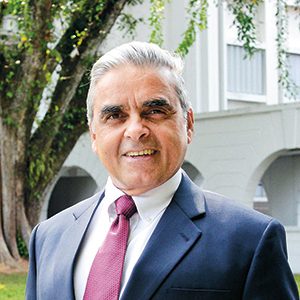
BTC has strong links with a critical generation of Singaporeans — the first builders of Singapore’s success story — and I dare say our country would not be so successful had BTC not trained them. In that sense, the campus is a precious part of our nation’s history.
Professor Kishore Mahbubani, Founding Dean, Lee Kuan Yew School of Public Policy, NUS
Crucially, NUS elected to preserve the existing buildings, upgrading or refurbishing them where necessary. Classrooms and lecture theatres were of course equipped with air-conditioning and modern technologies. Some areas were converted into a moot court and a multi-purpose auditorium, or reconfigured to encourage student-centred learning and peer discussion. Many renovations, however, were carried out to restore the buildings to their former glory, such as reinstating Block B’s original façade and the coffered ceiling at the lobby of the Oei Tiong Ham Building. The quadrangle lawns also underwent landscaping to maintain their design intent as communal interaction spaces.
One year after being handed the keys to the place, NUS made the historic return to its old stomping grounds in July 2006. NUS Law and LKYSPP, along with several research institutes, moved back to BTC. So did the CJ Koh Law Library, which fittingly took over the old Library Building. Other renamed structures included the Science Tower, now called Tower Block; and Block A, which was unveiled as the Li Ka Shing Building in 2007 in recognition of the Hong Kong tycoon’s generous gift to LKYSPP.
NUS had successfully pulled off the challenge of retaining BTC’s rich history and character, while adapting it in a manner befitting a world-class university. In 2009, BTC’s posterity was assured when the six buildings that made up the former Raffles College — Oei Tiong Ham Building, Manasseh Meyer Building, Federal Building, Eu Tong Sen Building, Li Ka Shing Building and CJ Koh Law Library, plus the two quadrangles — were gazetted as national monuments. This affirmed BTC’s status as a venerated institution and would protect it from redevelopment in the long run.

What was striking to me was how enthusiastic BTC alumni were about the move. It was an honour and privilege to engage with them and to see how happy they were that NUS was reclaiming its heritage.
Professor Tan Cheng Han, former Dean, Faculty of Law, NUS
Linking Past, Present and Future
Like Kent Ridge Campus, BTC sits on hilly ground with gentle slopes. Both have plenty of greenery and are well-integrated with the natural environment — which, in BTC’s case, is the Singapore Botanic Gardens. “BTC’s location in the middle of the Botanic Gardens, Singapore’s first UNESCO World Heritage Site, makes the campus even more special,” says LKYSPP alumna, Ms Elizabeth Tan, who is currently based in the United States. “It was amazing to be able to study there, in a place which embodied history and where I also felt connected to nature.”
If she were to change anything about BTC, it would be for the campus to host more University-wide events. “One of the things I liked most about my undergraduate years at Kent Ridge was how there were so many opportunities to meet people beyond my faculty. It would be nice for students from both campuses to congregate at BTC, which would also allow the Kent Ridge community to visit and appreciate the site,” Ms Tan suggests.
ACROSS THE ROAD
Another piece of its history that NUS has reclaimed is the old Dunearn Road Hostels, a cluster of pre-war terrace houses located just a short walk from BTC. Opened in 1952 for undergraduates of the then-University of Malaya, it used to house such luminaries as former President of Singapore, the late Mr SR Nathan (Arts ’54). Following NUS’ move to Kent Ridge in 1981, the estate was leased out to the public until NUS returned to BTC in 2006, after which it was converted into a hostel for graduate students of LKYSPP. In 2010, the site — now called College Green — was officially reopened by then-President Nathan.

Mr Ryan Kwan (Business and Law ’20), a Justices’ Law Clerk at the Supreme Court of Singapore, also enjoyed the best of both worlds while pursuing a double degree at NUS. On the one hand, he observes jokingly, the sprawling Kent Ridge Campus promotes “exercise”; on the other hand, the smaller BTC promotes “efficiency”. Adds the 27-year-old, “Since graduating from NUS, I’ve returned to BTC on a few occasions to help coach the moot court teams for competitions. The unchanged physical space is a powerful reminder of all the good memories that I had on campus.”
The years post-2005 have been kind to BTC, with relatively minor modifications being made here and there to improve the facilities and infrastructure. The campus has been the venue for annual Bukit Timah Homecoming reunions ever since the big bash in 2005, although recent instalments have switched to an online or hybrid format due to COVID-19. And with the transition from pandemic to endemic, students are returning to in-person learning, hence reviving the campus spirit and re-establishing BTC as the bastion of higher education that it was always designed to be.
As far as the future goes, who knows what may happen at or to BTC? It could continue to anchor LKYSPP and NUS Law for years to come; or, as Prof Tan posits, it could one day be transformed into an interdisciplinary research institute or a one-stop lifelong learning hub. But one thing’s for sure: everyone affiliated with the University wants BTC to remain with NUS, and its core look and feel to stay the same. As Prof Shih notes, “Let’s preserve the old while exploring the new. Let’s keep the olive tree instead of constantly rebuilding the Lexus.
What Was Your Favourite Spot?
BTC old and young alumni reveal some of their most cherished memories on campus.
"“I stayed at the old Raffles Hall for two years while studying at BTC. In the valley between Raffles Hall and Eusoff College, there was a sarabat stall where my friends and I would often grab tea and hang out.”
Prof Kishore Mahbubani (Class of ’71)
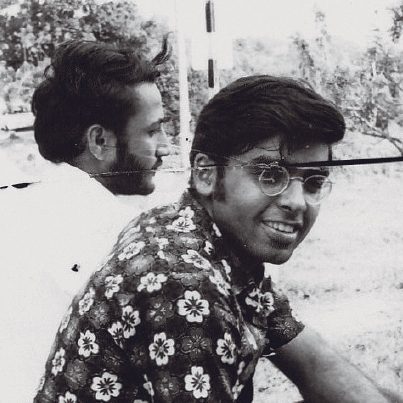
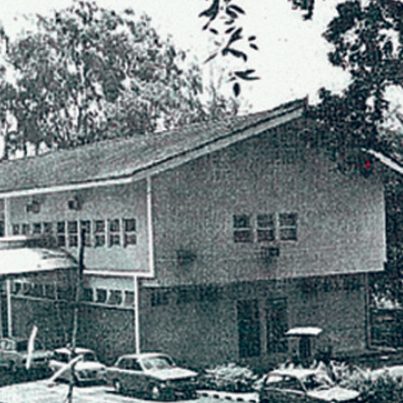
“We ran the Union House ourselves, including the canteen. As Secretary-General of the Students’ Union, I had my own office there too. Sadly, the building is no longer around, as it was torn down to make way for the Botanic Gardens’ expansion.”
Mr David Ho (Class of '72)
“On the upper levels of Block B, there are study spaces set up outside the seminar rooms. I had many discussions there with friends that would begin with questions on lecture topics, before inevitably digressing into what to eat later.”
Mr Ryan Kwan (Class of ’20)
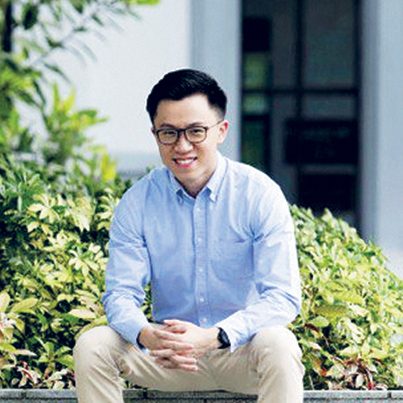

“The Upper Quad was where I usually had lunch and hung out with friends. From there, you can sit and reflect while admiring the surrounding buildings. The view is prettiest in the evenings, when shadows fall on the buildings and hallways.”
Ms Elizabeth Tan (Class of ’09), clockwise, 2nd from left
This article was written by Wanda Tan, and first appeared in The AlumNUS (Issue 129, Apr-Jun 2022).

